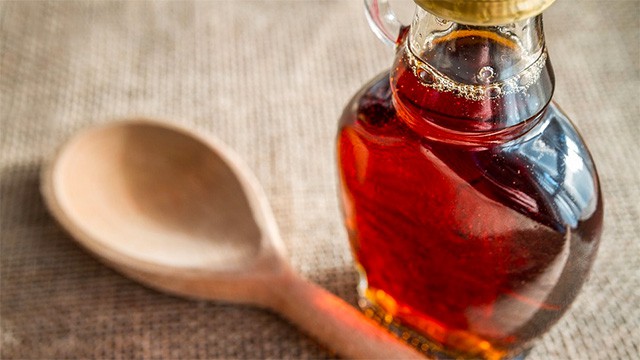Here’s How Maple Syrup is Made in Halton
Published March 29, 2018 at 9:05 pm

The maple leaf is a well-known symbol that is associated with Canada, and since Canada produces 85 per cent of the world’s maple syrup, they are also known for their maple syrup.
The maple leaf is a well-known symbol that is associated with Canada, and since Canada produces 85 per cent of the world’s maple syrup, they are also known for their maple syrup.
The Sugarbush Maple Syrup Festival at Terra Cotta Conservation Area in Halton Hills runs on weekends until April 8 and the festival taps into the process of how “pure liquid gold” is made.
Credit Valley Conservation parks manager and assistant superintendent Evan Orme went into detail on how the syrup is made.
They tap the trees at the end of February and go until the middle of April, giving them a six-week window to collect and make the syrup, said Orme.
“As long as we have temperatures between zero to minus five at night and zero to plus five during the day – frost nights and warm, sunny days – we’re going to be able to collect,” Orme said.
The collected sap is then transferred to a bin that is connected to a wood-burning evaporator. They control the flow of the sap into a pan, only allowing a little bit at a time in order for it to simmer, he said.
When the pan “gets to about 55 per cent sugar, we’re going to filter that off,” Orme said. “We have two filters here, a course filter and a fine filter and that’s because sap actually produces a granular material called sugar stands, and it affects the clarity and the texture of the syrup.”
The sap is then transferred into a propane pan where they can regulate the hear a little better in order for the syrup to reach 67 per cent sugar, he said.
If the sap is cooked too long and if the density of the sugar becomes too high, then it will coagulate and firm up like honey does and if it cooks too low, it runs the risk of bacteria, molds and other things contaminating the syrup, said manager of conservation parks Shawn Verge.
“There is no difference in the way that it’s cooked, in the sugar contents, or in the sweetness,” Verge said. “All maple syrup is made the same way. Over the six to eight weeks, when we collect the sap, those sugars are changing.”
There are four different types of maple syrup as well. At the beginning, they produce a lightly coloured, delicately flavoured syrup, Verge said.
“If you’re a tea drinker who dunks and tosses just to colour the water a bit and then move on, you might prefer a more delicate flavour, still the same sweetness, but not overpowering maple,” he said.
A week or two later, the syrup goes into an amber having more of a rich taste, followed by ten days later to a dark syrup with a very strong maple taste, Verge said.
“If mother nature corporates and seven to eight weeks in and we’re still collecting sap, you get a very dark, very strong maple flavoured syrup,” Verge said. “There’s no magic, and no difference.
It’s all about when that sap is collected, he added, “and what you like.”
insauga's Editorial Standards and Policies advertising





